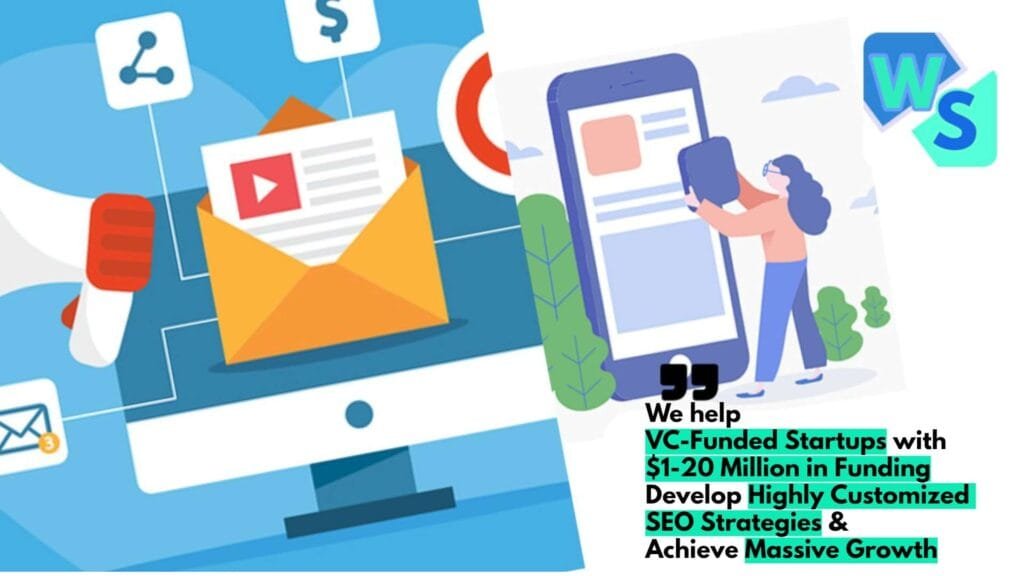Healthcare Email Marketing Fundamentals
Understanding HIPAA Compliance
Getting healthcare email marketing right means knowing your HIPAA ABCs—and that’s not A Big Challenge. The HIPAA (Health Insurance Portability and Accountability Act), which has been around since 1996, keeps a tight hold on patient info when you’re emailing about their health. Think of it as the Internet’s heart monitor for privacy. Only certain peeps like health plans, healthcare clearinghouses, providers, and their works-with-health-info buddies are in the HIPAA club (Mailchimp).
Before you hit send, here’s the HIPAA cheat sheet for safety and smiles:
- HIPAA Privacy Rule: Guard those health secrets with all you’ve got.
- HIPAA Security Rule: Keep digital health deets under lock and key.
- HIPAA Breach Notification Rule: If things go sideways, let your crowd and the Health and Human Services team know what’s up.
Break these rules, and it’s not just a slap on the wrist—think fines, a courtroom chill, or even a jailhouse rock (DearDoc). Bottom line, make sure your emails are riding the HIPAA train and that folks say it’s cool before their health tidbits fly in your marketing blasts. Dive deeper into HIPAA-compliant email musings for the full scoop.
Importance of Email Segmentation
In healthcare email marketing, slicing and dicing those email lists ain’t just about being fancy. It’s about sending sticky notes that hit home for different folks. Mix it up, and you’ll probably see more folks opening and clicking, which means more friendly chats turning into visits or calls.
So, how’s it done? Slice your list up based on things like how old folks are, their health curveballs, or how much they chit-chat back. Cue the customized health newsletters—your ticket to deeper connections (Envoke).
Peep this: A solid 80% of organizations getting the segment game right saw their sales ticket go up. To squeeze every drop of power from this, tap into your email software kudos to sort campaigns for your unique groups. Need more wisdom on health mail slicing and dicing? Our nifty guide on segmenting subscribers awaits.
| Cool Perks of Splicing Emails | Numbers Game |
|---|---|
| More Ka-Ching | 80% saw a bump in sales |
| More ‘Hey, that’s me!’ | Personal pep talks beat plain ones |
Getting the HIPAA part straight and crafting emails like a message wizard can totally reboot your healthcare emails. You’ll pull in attention, keep it legal, and build rapport with your crowd. Look into our healthcare marketing strategies if you’re in the mood for more game-changing tips and tales.
Strategies for Effective Healthcare Email Marketing
Email marketing can be a secret weapon for healthcare folks wanting to amp up their business game. The key tricks of the trade include finding the right rhythm for your emails, adding a personal touch, and throwing in some irresistible calls-to-action.
Optimal Email Frequency
Nailing how often to send emails is like finding the rhythm on a dance floor—it needs to be just right. You don’t want to fade away or, worse, become annoying noise in your recipients’ inboxes. Depending on the season and current promotions, the magic number is around two emails a month to a few per week. Below is a cheat sheet:
| Period | Frequency (Emails) |
|---|---|
| Monthly | 2 – 12 |
| Bi-Weekly | 2 – 6 |
| Weekly | 1 – 3 |
Keep tapping to your own beat, and you’ll keep folks grooving.
Personalization in Email Content
Getting personal is where the magic happens. Sending emails that seem like they were crafted for each person makes a world of difference. It could be anything from a friendly nudge about an upcoming appointment to a warm welcome, informative content, or even invitations to events. Just make sure you play it safe with HIPAA rules, so personal info stays under lock and key.
If you’re keen on cracking the code for audience segmentation, our segmenting subscribers for targeted engagement page has got your back.
Incorporating Call-to-Actions
Call-to-actions, or CTAs if you want to sound fancy, are the nudges that get folks to jump from interested to action-takers. The right CTA can lead them to schedule appointments, join a webinar, or become part of a community. A good CTA doesn’t beat around the bush—it’s clear and gets right to the point.
Some tried and true CTA gems include:
- “Schedule Your Appointment Today”
- “Sign Up for Our Webinar”
- “Download Our Health Guide”
- “Join Our Community”
Once you’ve got these strategies in play, your email marketing will be running on all cylinders. If you’re still hungry for more tips, you can always dive into our healthcare marketing campaigns and digital healthcare marketing sections for even more inspiration.
HIPAA Compliance in Email Marketing
HIPAA Regulations for Healthcare Emails
Marketing for healthcare isn’t just about getting the info out there; it’s got to be careful not to cross any lines, especially when it comes to HIPAA rules. HIPAA, which came into play way back in ’96, makes sure all health info flying around electronically stays under wraps, even those in emails (Mailchimp). So, if you’re sending emails with Protected Health Information (PHI), you’d better be following HIPAA like your life depended on it. We’re talking about folks like healthcare providers, insurance plans, and their business partner buddies who handle patient info (Paubox).
Get it right or get ready for some heavy-duty consequences—fines that empty bank accounts, criminal charges, even jail time (DearDoc). HHS means business if you drop the ball on compliance, slapping fines from $100 to $50,000 for civil penalties, and from $10,000 to $50,000 for when you really screw up.
HIPAA Compliant Email Platforms
Picking the right email platform is like choosing a safe for your grandma’s jewelry—you want one that locks tight. HIPAA-compliant platforms lock down PHI with top-notch security, keeping you in the clear with all the rules.
Some options are more than just a locked box—they’re packed with extras like secure chat, audit trails, and foolproof sign-ins for ramped-up security. The trick is finding a platform with hardcore encryption that promises to play by HIPAA’s rulebook.
| Leading HIPAA-Compliant Email Platforms | Key Features |
|---|---|
| Paubox | Top-to-bottom security, Lock-tight messaging, Secure user sign-ins |
| Virtru | Lockdown encryption, Secure email checkpoints, Compliance failsafes |
| LuxSci | Encrypted emails, Secure forms, HIPAA know-how training |
| Aspida Mail | Fortified emails, Secure web hangout, Compliance paperwork |
If you’re rolling out email marketing campaigns, remember to plug into systems that keep data on lock and patient gossip private.
Healthcare hotshots like business bosses, CEOs, and marketing brainiacs need a strong grip on hitting those HIPAA standards. Get yourself a compliant email platform, and you’re not just avoiding legal headaches—you’re boosting trust among patients.
Want the lowdown on healthcare marketing tactics with the compliance nod? Check out our spots on healthcare marketing strategies and healthcare marketing services. Don’t miss a beat with healthcare marketing trends.
Steering clear of HIPAA faceplants means your healthcare gig keeps patient secrets safe while drawing a crowd. Nail it with the right setup, and you’re cruising to both compliance and success.
Types of Marketing Emails in Healthcare
Healthcare email marketing is a handy way to keep tabs on patients, spread the word about new health services, and, if needed, share any sensitive health tidbits. Grasping the different flavors of marketing emails in healthcare can boost messaging success and make sure you’re playing by the rules.
Promotional Emails to Patients
Think of promotional emails as the bread and butter of healthcare marketing. These are all about keeping patients in the loop on anything from fresh services, handy health tips, to friendly reminders and events. Making these emails personal is the secret sauce, ensuring each message hits home with individual patient interests (DearDoc). For more tips on nailing those promo campaigns, hop over to our healthcare marketing strategies.
Playing it safe with HIPAA in these emails is a must—keeping patient safe is key. So, no oversharing! Here’s a simple rundown of what to stick with and what to skip:
| Elements | Do Include | Don’t Include |
|---|---|---|
| General Health Tips | Heck yes | No Personal Health Info |
| Service News | Sure thing | No Patient-Specific Details |
| Event Invites | Absolutely | No Sensitive Health Info |
Third-Party Marketing Emails
Third-party marketing emails are a different ballgame. These typically showcase products or services that line up with health and wellness themes. Keeping it above board with HIPAA here is crucial, especially if PHI pops up.
Gotta have patient buy-in when passing the baton to third parties—consent is king. Dive into our guide to obtaining individual consent to get up to speed.
PHI Sharing Emails
Emails where PHI takes the stage demand top-notch care to tick all HIPAA boxes. These usually cover:
- Appointment nudges
- Test results
- Individualized treatment plans
Safety’s the name of the game with PHI. Encrypting and securing that sensitive info is non-negotiable (Paubox). If you’re in the market for reliable email shield, check out our HIPAA compliant email platforms guide.
Here’s a snapshot of what’s needed for PHI email compliance:
| Requirements | PHI Emails |
|---|---|
| Encryption | You bet |
| Patient OK | Absolutely |
| Safe Platforms | For sure |
Getting clued-in on the different types of marketing emails means businesses can not only talk to their healthcare audience but do it with the right mix of compliance and confidence. For more savvy tips and resources, see our full-on healthcare marketing services section.
Implementing HIPAA Compliant Email Practices
For healthcare folks who wanna chat with patients through emails, sticking to HIPAA rules is a big deal. Doing it right keeps trust alive and dodges any slap on the wrist from the authorities.
Obtaining Individual Consent
Before you jump into sending out those marketing emails, make sure to get a big, loud “YES” from the folks you’re messaging. The deal here? Be crystal clear about why you need their email and what kind of stuff they’ll be getting in their inbox. According to Paubox, patients need to say “yes” before anything starts landing in their email, keeping in step with HIPAA’s rulebook.
Here’s the usual play:
- Lay out why you’re asking for their email
- Tell ’em what kind of emails they should expect
- Make it super easy for them to sign up
- Give ’em a simple way to bow out if they’re not feeling it
| Consent Process | Description |
|---|---|
| Clear Purpose | Spell out why you’re collecting those emails |
| Email Nature | Explain the kinds of messages coming their way |
| Opt-In Simplicity | Easy as pie signup |
| Opt-Out Simplicity | Just as easy to wave goodbye |
Handling Authorization for Marketing Communications
This bit’s about playing it safe with marketing. According to Paubox, if you’re pushing products or services via email, it’s gotta be by the book. Authorization needs to be pinned down, no surprises allowed.
Here’s the lowdown on handling this:
- Get their John Hancock, be it on paper or online
- Make sure everything’s spelled out in these authorizations
- Keep a tight hold on all these records
- Use HIPAA compliant email platforms to keep everything airtight
| Authorization Management | Details |
|---|---|
| Written/Electronic Okays | Clear-cut agreement on marketing stuff |
| Specific Details | Make sure all info is locked in |
| Record Keeping | Keep all proof handy |
| HIPAA Safe Platforms | Guard patient data like it’s gold |
If you’re hungry for more tips on sprucing up your healthcare email tactics, pop by our healthcare marketing services page or dive into healthcare email marketing strategies. Keeping these practices tight not only keeps you on the good side of compliance but also builds solid bridges with patients, making email a trusty tool for connecting with them.
Email Marketing Statistics in Healthcare
Keeping an eye on numbers in your email marketing game is gold for healthcare businesses. Whether you’re at the helm as a CEO or tinkering with the latest marketing strategy, these insights into open rates, unsubscribes, and content clicks can steer your efforts in the right direction.
Average Open Rates and Unsubscribe Rates
Emails shot out in the healthcare field? They pack a punch, suggested by their open rates. We’re talking an average of 41.23% – that’s pretty darn impressive when you pit it against other sectors’ numbers. Some tricks of the trade to get those rates soaring include knowing your audience, crafting spot-on content, and keeping your sender reputation squeaky clean.
And here’s the cherry on top: healthcare emails have this magic touch with a super low unsubscribe rate of 0.07%, while the cross-industry standard lingers around 0.19% (Paubox). A sure sign folks are sticking around for what you’ve got to say.
| Metric | Healthcare Average | Industry Average |
|---|---|---|
| Open Rate | 41.23% | – |
| Unsubscribe Rate | 0.07% | 0.19% |
Impact of Content Type on Click-Through Rates
Dishing out the right kind of content is where the magic happens for click-through rates (CTR) in healthcare emails. Toss in educational nuggets and watch those engagement rates climb. Emails focusing on healthcare services hit a CTR of 3.0%, but swap in educational articles, and you could see a beefier CTR of 4.4% (Paubox). Giving people something to chew on not only engages them but makes your email campaigns sparkle.
| Content Type | Click-Through Rate (CTR) |
|---|---|
| Healthcare Services | 3.0% |
| Educational Articles | 4.4% |
Another look at the stats shows health-related emails boasting an average open rate of 23.46%, with an eyeball-grabbing click rate of 3.62% (Envoke). It just goes to show, thoughtful and valuable content is key to getting recipients to act.
If you’re itching for more pointers on fine-tuning your healthcare email crusades, check out our other reads on healthcare marketing strategies, healthcare content marketing, and healthcare email marketing statistics. Dive into these resources to give your campaigns the boost they deserve.
Mobile Optimization and Email Campaigns
When it comes to healthcare email marketing, getting your emails to look good on mobile gadgets is non-negotiable these days. With so many folks scrolling through emails on their phones, you’ve gotta make sure those messages pop on smaller screens.
Importance of Mobile-Friendly Emails
Did you know more than half of all internet action happens on mobile devices? Paubox says so, and that’s all the more reason your emails need to look sharp on mobiles and tablets. It’s about making sure they’re easy to read and get around on tiny screens. If you’re a healthcare provider, this is your chance to really connect with patients through emails that get opened and clicked on with ease.
Healthcare emails have an average open rate of about 23.46% and a click-through rate of 3.62%. Imagine what those numbers could be if every email looked great on mobile!
| Metric | Healthcare Industry Average |
|---|---|
| Open Rate | 23.46% |
| Click-Through Rate | 3.62% |
Impact of Device Compatibility on Campaign Performance
Device compatibility can make or break your email campaigns. If an email doesn’t open properly on a phone, you bet folks are gonna bounce faster than you can say “unsubscribe.” Here’s what you need to focus on:
- Responsive Design: It’s all about making sure your email adjusts itself no matter the screen size. Forget giant images and teeny-tiny text—everything should stretch and flex to fit.
- Simplified Content: Keep it short, sweet, and to the point. You’ve got less space, so make every word count and get those calls-to-action (CTAs) front and center.
- Clickable Elements: Make sure everything is easy to tap. There’s nothing worse than trying to hit a button and missing it because it’s too tiny.
As per Paubox, when your emails play nice with mobiles, you not only avoid the dreaded e-trash bin but also keep people engaged. This approach boosts not just your emails’ effectiveness but also gets you closer to your patients.
For the inside scoop on killer email marketing tactics, check out our piece on healthcare marketing strategies and figure out how to use healthcare digital advertising to really spread the word.
By weaving these mobile-friendly moves into your strategy, healthcare marketers can keep their communications snazzy and on-point, making sure emails land right where they should—front and center.
Best Practices for Healthcare Email Marketing
Email Frequency Recommendations
Figuring out how often to send emails in the healthcare biz is like finding the right coffee dose—you want to keep folks buzzing about your services without them crashing from overload. Studies suggest that sending emails two times a month up to three times a week generally keeps patients in the loop, without feeling spammed. The exact magic number might fluctuate based on the season or if there’s a snazzy promo spinning up (DearDoc).
For those who like to play it safe, sending out emails once a month or every other month is usually a solid plan. This keeps patients in the know without turning their inbox into a never-ending scroll of updates (Paubox).
Here’s a lowdown on frequency:
| Email Frequency | Context |
|---|---|
| Twice a Month | Good for the standard updates and chill news |
| Thrice a Week | Great for razzle-dazzle promos or health drives |
| Once a Month | Perfect for general newsletters and basic news |
| Bi-Monthly | Best for when you’ve got major updates or policy tweaks |
A balanced frequency helps healthcare folks keep communication lines open and thriving.
Building Patient Relationships through Email
Email’s like the digital hug for healthcare guys wanting to bond with patients. It cuts through the noise and goes straight to the point, offering a friendly nudge about health matters (MailerLite).
With an average open rate of 23.46% and a click-through of 3.62% in healthcare, it’s clear emails aren’t just floating in the ether—they’re getting attention.
Here’s some smart ways to cozy up with patients through their inboxes:
Personalized Content: Tap into what’s already there—patient data. Craft emails that speak directly to their needs, offering personalized advice, little reminders about appointments, or even some sweet deals they’re likely to appreciate.
Educational Information: Send out nuggets of wisdom—articles, health hints, and updates on cool medical advances. Before you know it, you’ll be their go-to guru for all things health.
Patient Engagement: Stir the pot by throwing in surveys or feedback forms, or maybe link up to social media. Stirring up engagement can help, especially with juicy patient stories or glowing testimonials to get folks talking.
Clear Call-to-Actions: Don’t just leave them hanging—tell ’em what to do next! Whether it’s hitting up a patient portal, snaggin’ an appointment, or joining a health program, make the path clear.
Looking for even more ways to supercharge your healthcare emails? Check out our complete guide on healthcare marketing strategies.
By keeping these strategies up your sleeve, healthcare providers can turn run-of-the-mill emails into relationship-building powerhouses, boosting satisfaction and keeping patients coming back. For more tips on making your email magic, hop over to our piece on healthcare marketing campaigns.
Segmentation Strategies in Healthcare Marketing
Getting segmentation right in healthcare email campaigns is like having your favorite coffee just as you want it. Perfectly segmenting your email crowd can mean richer connections and, more to the point, a prettier bank balance.
Revenue Impact of Market Segmentation
Chopping up your audience into manageable bits lets healthcare marketers craft their emails like love letters, each word striking just the right chord. And guess what? Doing it right can lead to eye-popping revenue leaps of up to 760% (so says Paubox).
| Benefit | Percentage Increase |
|---|---|
| Revenue Boost | Up to 760% |
Numbers like these should slap the importance of smart segmentation right onto the top of your priority list. Healthcare peeps who slice and dice effectively can keep their patients grinning, services spot-on, and the budget under control. For the secret sauce to fatter revenues via smart marketing, jump over to our piece on healthcare marketing strategies.
Segmenting Subscribers for Targeted Engagement
Breaking the subscriber base into bite-sized pieces lets healthcare outfits send emails that feel personal instead of generic. That’s good news for patient engagement and makes everyone happier.
Here’s how you can split your subscribers in the healthcare gig:
- Demographics: Think age, gender, and the size of their wallets.
- Behavioral Data: Docs they visited, pills they popped, or which emails they liked.
- Geographic Location: The home turf, from big cities to sleepy towns.
- Psychographic Data: What makes ’em tick – lifestyle, faves, and beliefs.
Using these clever tricks, hospitals and clinics can dish out content that patients actually care about. When you get it right, newsletters are no longer just junk in the trunk – they can seriously boost performance (Envoke).
| Segmentation Criteria | Examples |
|---|---|
| Demographics | Age, gender, salary, job title |
| Behavioral Data | Visit records, past care, previous emails |
| Geographic Location | City, state, or beyond |
| Psychographic Data | Lifestyle vibes, what thrills them |
Building that email squad is a breeze with savvy techniques like grabbing emails at patient visits, using snazzy opt-ins on websites, and tapping into social media networks (MailerLite). If you’re curious on how to hit the bullseye with these tactics, peek at our healthcare content marketing page.
Get segmentation spot-on, and you’ll churn out content that sticks in patients’ minds, boosting loyalty and joy. For a deeper dive into getting targeted engagement right, check out our guide on healthcare marketing planning.





















